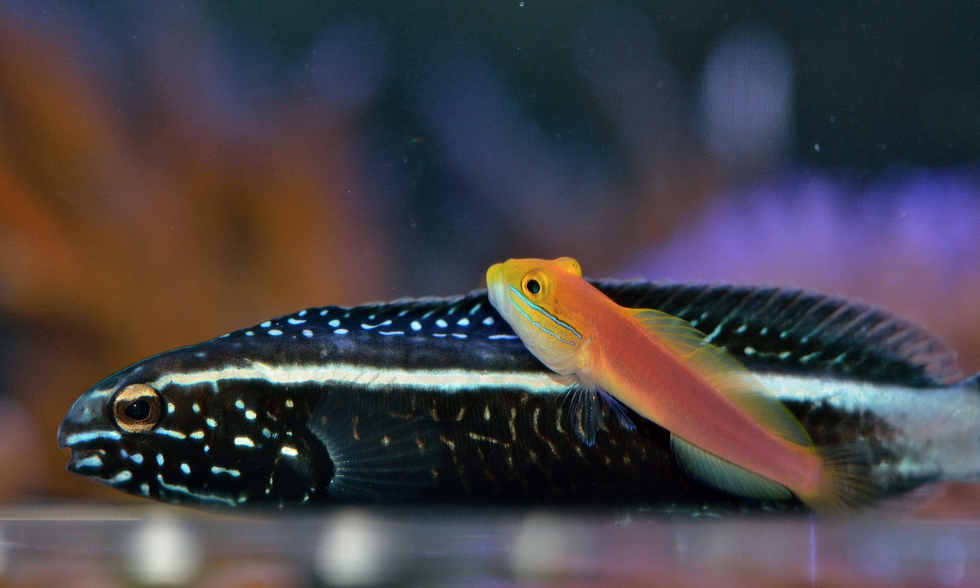Meiacanthus kamoharai is quite possibly the most beautiful of the fang blennies. Unlike most Meiacanthus, the kamohara fang blenny ditches the stripey dress code that is associated with many in this genus. Instead, a silver vein runs along its jet black body, parallel to its dorsal fin sprinkled in an icy blue dust. Meiacanthus kamoharai has never left the confines of Japan, but thanks to Koji Wada of BlueHarbor, this individual was destined to live its life as an immigrant.

Koji has been gracious enough to fulfill a request in obtaining this species. Locally, the fish is unbelievably common, and is found in shallow water in lagoons, boat docks and other similar habitats. It is rare to find one sitting in a fish store being sold for peanuts, as the demand for this fish in Japan is next to zero. Meanwhile in another paradigm located far away in a distant universe (i.e, the rest of the world), the same is not to be said.

While ubiquitous, the fish is not easy to catch as testified by Koji himself, who is seen here snorkeling in this beautiful lagoon. Unlike the other fang blennies, this species is much larger and thicker and swims in a powerful snake like fashion. As mentioned before, M. kamoharai would probably spawn easily and be successfully bred on a commercial scale to meet the needs of die hard blenny lovers. How cool would it be if ORA or our very own Matthew Pederson were to offer captive bred babies of this lovely species. Based on past records of Meiacanthus breeding, we’d say it’s not that much of a stretch provided some actually make way to the states.
Yet another gorgeous Japanese number that came together with the kamohara blenny is this bella sandsifting goby (Valenciennea bellae). Just like the kamohara fang blenny, V. bellae used to be restricted entirely to the local japanese market. It is only in the recent few months that they’ve started hitting stores in the states, many of which in tiny numbers personally delivered by Koji Wada himself. LiveAquaria and House of Fins are some of the few fish stores lucky enough to receive this exclusive pink goby.

The batch of V. belle that arrived at Singapore’s Iwarna Aquafarm were mere babies, barely an inch long. While most took readily to frozen food, some needed a little more time. We’ve found that they do markedly better in pairs, and once bonded, are inseparable. They hover a few inches off the bottom as a duo and pick floating food off the water column. Needless to say, they do perform their sand sifting duties rather diligently as well.

Males are intolerant of each other and will fight soon after being placedtogether. If two don’t fight, then they are most probably a male-female pair like the one above. Like most other fishes, they become bolder and will venture out for food more willingly when paired up. Both the kamohara fang blenny and the bella sand sifter gobies do best in a slightly chilled tank of not more than 27C, or (80.6F).
Once again we’d like to personally extend our thanks to Koji Wada, who has made V. bellae so much more accessible to the general populace, and i’d like to add on a personal thank you note for the lovely kamohara fang blenny.



